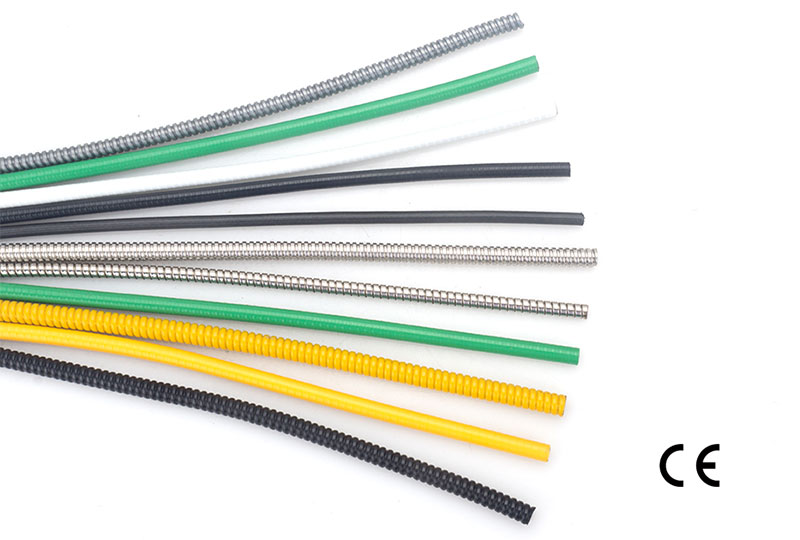Dec. 28, 2020
As a Flexible Electrical Conduits Supplier, share with you.
Fatigue crack propagation area of flexible metal conduit:

Flexible Electrical Conduits
In general, the micro morphology of the fatigue crack propagation zone has
the characteristics of cleavage or quasi-cleavage fracture. However, when the
material grain boundary is significantly weakened, the fatigue fracture can also
be characterized as intergranular fracture. The morphological features of the
fatigue crack growth zone also include macro fatigue fringes (conchoidal
patterns) and radial fringes. Micro fatigue streaks are traces left by the crack
propagation process under the action of each stress cycle. The micro fatigue
streaks are not continuous due to the microscopic defects of the material
(inclusions, second phases, grain boundaries, etc.) or the difference in crystal
phase , But distributed on small faces of different heights and shapes. The
micro fatigue streaks are slightly curved arcs, usually, the arc center points
to the beginning of the crack. When the material strength is very high, because
it is very brittle, the micro fatigue cracks are not obvious enough on the
cleavage surface of the fatigue fracture. At this time, the fatigue properties
of the component fracture can be determined according to the macro fatigue
streak or the fatigue streak termination line. The radial pattern is another
microscopic feature of the fatigue crack propagation zone. It is the fringe
formed by tearing due to the height difference between different propagation
paths during the fatigue crack propagation process.
According to the above analysis:
The main failure mode of weld cracks in flexible metal conduits is fatigue
cracking, which exhibits the characteristics of rational fracture. However, it
is a general situation that the fatigue lines of austenitic materials with
better toughness mentioned in the textbooks have obvious distribution
characteristics. When the grain boundaries of austenitic materials are weakened,
grain boundary cracks may also appear. Is the fatigue pattern of stainless steel
material itself not particularly obvious? Not necessarily, the state of force,
the direction of force, temperature, environment, etc. will all affect the
morphology of fatigue cracks, but as long as there are macroscopic features of
fatigue shell patterns, it must be fatigue cracking (except for corrosion
patterns). Only the microscopic stripes of fatigue fracture of high-strength
materials are not obvious.
Our company also has Flexible Electrical Conduits on sale, welcome to contact
us.















